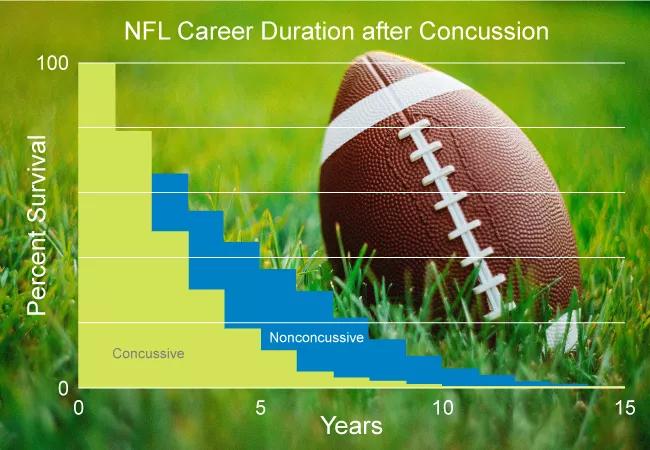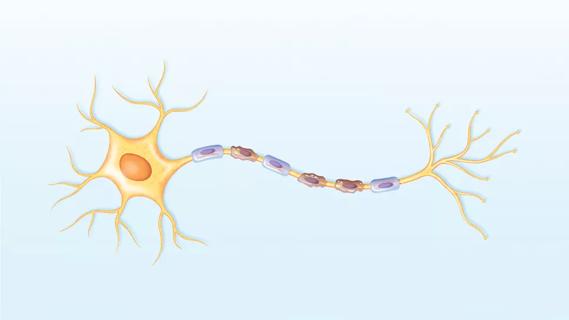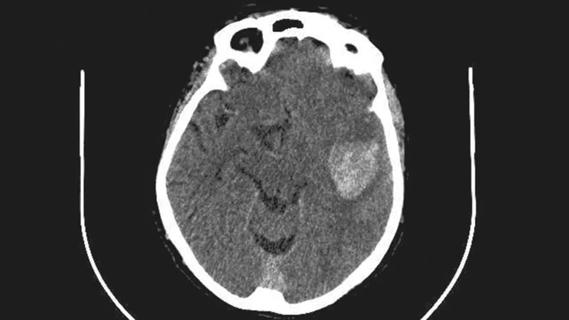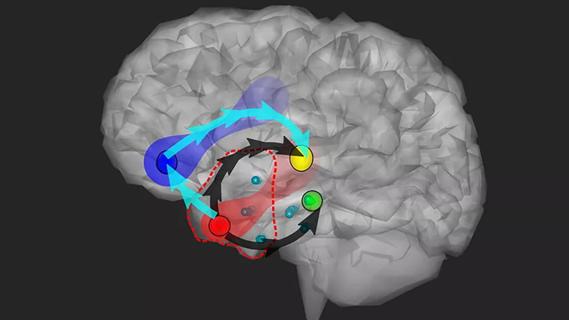Career longevity, finances, performance all negatively affected

By Richard Figler, MD, and Prem N. Ramkumar, MD, MBA
Cleveland Clinic is a non-profit academic medical center. Advertising on our site helps support our mission. We do not endorse non-Cleveland Clinic products or services. Policy
The National Football League (NFL) recently released injury data, and they showed a disturbing increase in the number of diagnosed concussions. They were up 16 percent. In 2016, 243 concussions were reported; in 2017, 281 were reported.
This concerning statistic emerges as more articles are published in the medical literature and the lay press discussing the plausible link between traumatic brain injury, higher rates of depression and dementia among retired NFL players, and the postmortem diagnosis of chronic traumatic encephalopathy (CTE).
Studies have focused primarily on potential long-term deleterious effects of concussions during “life after football.” Few if any researchers have looked at potential short-term effects on team and career length, financial consequences and performance.
The average NFL career lasts only 3.3 years. To put that into perspective, most of us would not have finished medical school yet by the time our NFL career would be over.
The idea to conduct this first-ever study examining short-term consequences of concussion was born from the analytical mind of Dr. Ramkumar. Our results were published in the Orthopedic Journal of Sports Medicine.
Filtering through publicly available data on nearly 6,000 players from 2005 to 2016, we identified 307 players who sustained a concussion based on NFL injury reports. A retrospective comparison was then made between the concussed and nonconcussed groups.
When it comes to the short-term impact of concussions on NFL players, all four parameters evaluated revealed negative consequences of their injury. The four parameters we studied:
Franchise release rate. Those players concussed experienced a higher rate of roster instability after sustaining their concussion. After one year, the total release rate was 33.6 percent for the concussed group and 21.6 percent for the nonconcussed group. Looking at the three-year total release rate, 67.1 percent of the concussed group were released compared to 43.0 percent of the nonconcussed group.
Career length. We then evaluated longevity in the league overall, in terms of one-, three- and five-year survivorship. The probability of remaining in the NFL at one year after a concussion versus without concussion was 77.7 percent versus 78.3 percent. However, after three years, the figures changed to 30.1 percent versus 54.3 percent. And after five years, just 11.6 percent of concussed players were still in the NFL versus 36.6 percent of nonconcussed players (Figure 1).

Figure 1. Kaplan-Meier survival curves for National Football League (NFL) players: concussive versus nonconcussive.
Overall, 70 percent of those who were concussed were no longer in the NFL three years after their concussion and 88 percent were not playing five years after their concussion.
Contract value/salary. Having a concussion also affected the year-over-year change in contract value for the concussion group, with an overall salary reduction of $300,000 per year. This parallels another retrospective study that reported an anterior cruciate ligament tear costing an NFL player $500,000 per year after injury.
The largest salary declines in our concussion study were in the veteran groups, who generally command a higher salary. There was a mean decline of $460,000 per year for those concussed during their fifth through seventh years, and $1 million per year for those concussed during their seventh to tenth years.
Performance. Performance is more difficult to measure, given the lack of statistics for defensive players. Looking at tight ends, running backs, wide receivers and quarterbacks, we found an overall statistically significant decline in performance after their concussion.
In our retrospective study of the short-term effects of concussion in the NFL, concussed players compared to nonconcussed players showed a higher release rate and a lower probability of remaining in the NFL. In addition, the concussed athletes incurred a significant reduction in yearly salary and at certain offensive positions, performed worse.
Concussion prevention, diagnosis and treatment need to continue to be addressed at all levels of sports. Results of our study may provide useful counseling information, and also demonstrate that player issues that impact athletes after concussion warrant additional attention from sports researchers as well as from NFL owners, personnel, coaches and those most affected, players themselves.
Subsequent studies will seek to establish the relationship between time missed due to concussion and the short-term parameters assessed in this study.
Dr. Figler is Interim Director, Primary Care Sports and Exercise Medicine; Director, Primary Care Sports and Exercise Medicine Fellowship; and Medical Director, Cleveland Clinic Concussion Center. Dr. Ramkumar, orthopaedic surgery resident, was senior author on this study. He also was senior investigator in a similar study of National Hockey League players that was published recently in the Journal of Neurotrauma.
The authors thank the hard-working Baylor College of Medicine students for their assistance with this study.

Awards fund research on oxidative targets, immunometabolism, spatial navigation testing and more

Large cohort study suggests need for routine sleep screening as part of neurological care

Early experience with the agents confirms findings from clinical trials

Determining the right dose and injecting in the right muscle can be challenging

ENRICH trial marks a likely new era in ICH management

Study combines intracranial electrophysiology and SPECT to elucidate the role of hypoperfusion

New research sheds light on a potentially devastating condition that is reversible when properly managed

Testing options and therapies are expanding for this poorly understood sleep disorder